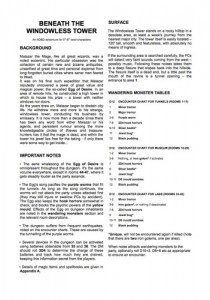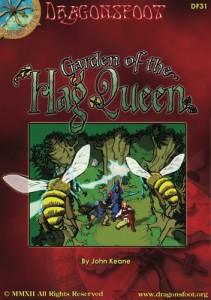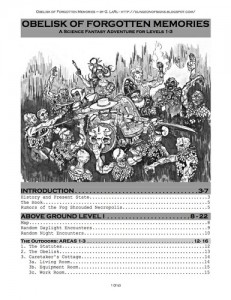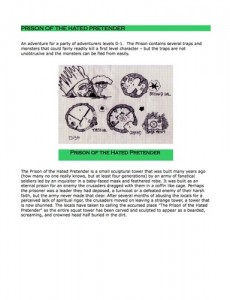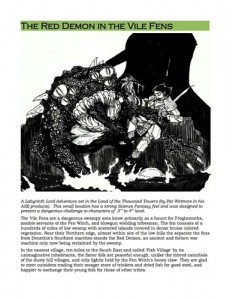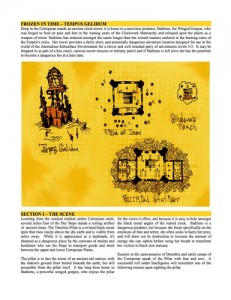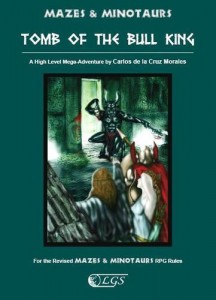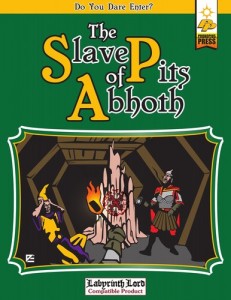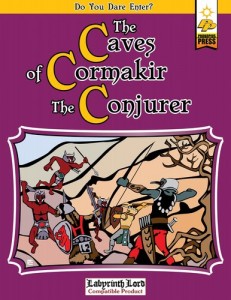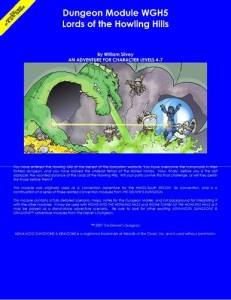by John
Freely distributed via Scribe/Tenkar’s Tavern
AD&D
Levels 5-8
Malazar the Mage, like all great wizards, was a noted eccentric. His particular obsession was the collection of certain rare and bizarre antiquities, unearthed at great time and personal expense from long-forgotten buried cities where saner men feared to tread.
It was on his final such expedition that Malazar reputedly uncovered a jewel of great value and magical power, the so-called Egg of Desire. In an area of remote hills, he constructed a high tower in which to house his prize – a tower with neither windows nor doors.
As the years drew on, Malazar began to disdain city life. He withdrew more and more to his strange, windowless tower, conducting his business by emissary. It is now more than a decade since there has been any word from either Malazar or his agents, and persistent rumour among the more knowledgeable circles of thieves and treasure- hunters has it that the mage is dead, and within the tower his jewel lies free for the taking – if only there were some way to get inside…
A 45-ish room adventure in the complex under a wizards tower. It brings forth images of a mash-up between The Purple Worm Graveyard, Death Frost Doom (the singing part) and Tower of the Stargazer, except it’s got more going on than those three adventures and feels less slow than the LotFP product and more involved then tPWG. This is a solid one-level dungeon. It was the winner of a Tenkar’s Tavern contest.
Ye olde Mad Wizard; where would D&D be without them? The only thing better than a mad wizard is one known to have a giant jewel. Better than that? When said mad Wizard hasn’t been seen in awhile. Time to go grab some !!PHAT L00T!! The catch this time is that there are no doors or windows to the wizards tower. A search nearby reveals a weird humming son that leads to a ravine , and then to a cave mouth … And we’re off!
The dungeon map is an Logos one, one of his larger and more complex ones. It’s got a cavern section and a worked rooms section, tunnels that go up and under other areas, same-level stairs, and a small vertical section near the end. I should like this map but I don’t for some reason. There is some “chain of rooms” syndrome going on and maybe that’s it. Not so much hallways as rooms that open on to each other. I don’t know why I don’t like that, but the map certainty has a decent amount going on with a decent variety. I don’t know. The wanderers are just a selection of things found in the dungeon and a few environmental effects. They do have some neat-o notes though; generally how they react after the party grabs the Big Honking Jewel. Oh, and the Slicer Beetles … they like to grab sliced off limbs and run away towards their lair room. Cute. 🙂
The encounters are a pretty decent mix of freaky stuff, obstacles, and monsters. You’ve got purple worms running around in the cave sections. They get really pissed off once the jewel stops singing. There’s wandering purple worms, purple rooms % chance rooms and purple worm hatchery rooms. Purple worm tunnels to crawl through, collapsed purple worm tunnels … uh … a lot of purple worm stuff. Then there’s a decent amount of Hook Horrors running about who also get pissed then the jewel goes offline (because it’s sitting in someone backpack, most likely) and some freaky deaky stuff, like a bribable Xorn (has there even been a Xorn encounter in which they DIDNT want a bribe?) puffball fungus spores, crazy beetles out of Gamma World and weird mirror pools. Sounds like a pretty cool set of caves to me! Did I mention the chasm?! I LUV chasms!
And THEN you get to the wizards dungeon portion of the map with a COMPLETELY different set of freaky stuff. Weird magical contraptions, deactivated statues, levers and techno-magic, people in stasis, and a hyperintelligent mold colony. This part has fewer creatures and more ‘traps’, thought the traps all pretty much all of the ‘things you shouldn’t be screwing with anyway’ variety. There are cool teleporter arches to be repaired, giant mimc traps, body changing gizmos, an ‘etherealiser’ machine … and a room full of thought eaters for those who use it! One device is appropriately named ‘the Weirdo Machine.’ This is a great pseudo-gonzo section of the dungeon. I particularly like the monsters here. They fit in almost as well as the ones in Many Gates of Gann. The party should have to leave their comfort zone and be faced with real wizard magic. This section does that without seeming arbitrary.
There are some Vancian-type spellbooks to pick up and the mundane treasure is varied and interesting, as is the magical stuff. I love the fact that the potion of strength smells of sweat, or the potion of insect control had little insect legs in it. There’s a whole series of these and I LOVE it. It’s not a magic heavy treasure haul and a Figurine of Wondrous Power might be the most normal item in it. The mundane treasure is pretty good also: lots of gilded swords and engraved armor and juicy jewels, silk bags and crystal goblets. Treasure the way it should be, and a bit of coin to go along with it. Oh, oh, there also a little imp in a bottle that acts like a spellbook! Be nice to him and he teaches you spells! How’s THAT for Vancian?!?
50-ish rooms in 9 pages with a more OD&D feel than an AD&D feel. This one is worth having.

